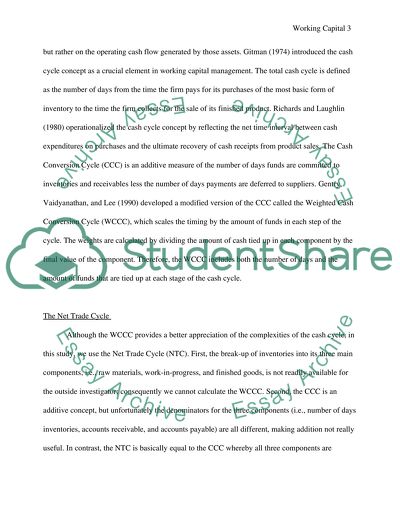Measures of Working Capital Management Efficiency and Their Essay. Retrieved from https://studentshare.org/miscellaneous/1532790-measures-of-working-capital-management-efficiency-and-their-relationship-to-corporate-profitability
Measures of Working Capital Management Efficiency and Their Essay. https://studentshare.org/miscellaneous/1532790-measures-of-working-capital-management-efficiency-and-their-relationship-to-corporate-profitability.


